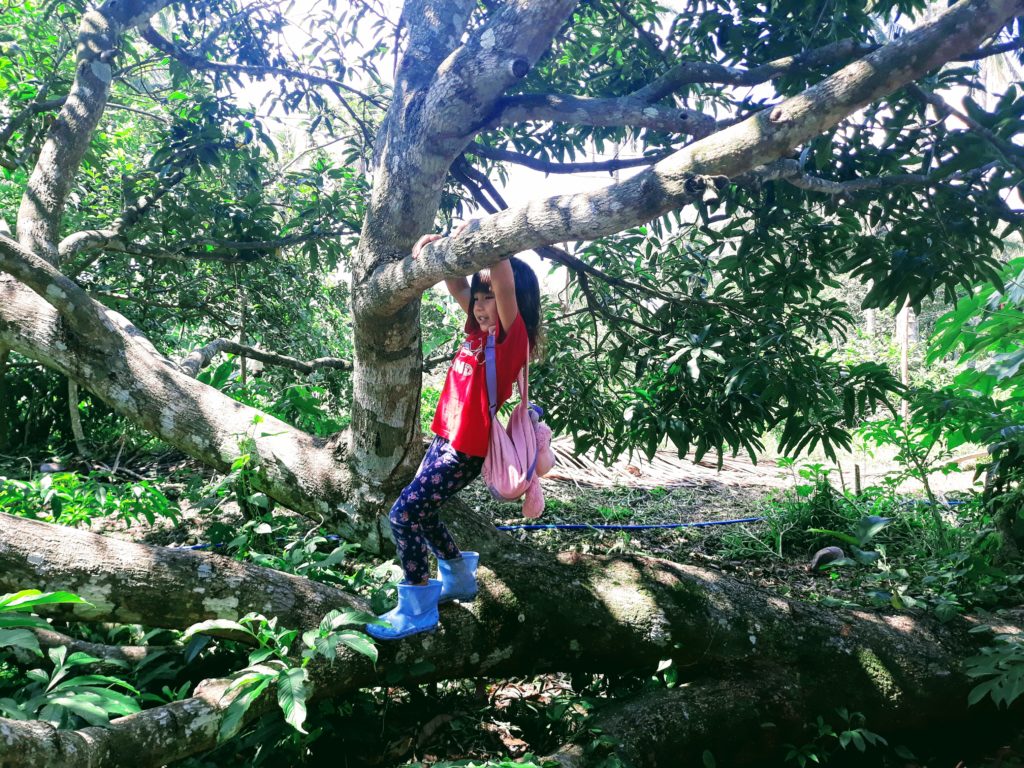“Baka mahulog ka!” (You might fall!)
Ever catch yourself telling your child this?
Your heart is beating fast and your palms are sweaty as you grab your child midway through climbing the stairs (or a tree).
Whew. At the back of your mind, you’re thinking, “Mahirap kang palitan anak pag may mangyari sa’yo.” (It will be difficult to replace you if something happens to you.)
Pretty normal for a parent to say this, right?
Because as a parent, you want to protect your child from further injury, or worse, death.
Now, this may come as a surprise and sound counterintuitive, but what you intend as good for your child, may actually be more harmful.
*drumroll please*
When you say, “Baka mahulog ka!” what he is actually hearing is this:
“You are not capable.”
“The world is dangerous.”
“You need me to help you figure out how to navigate this world.”
Quite the opposite than what you intended, ei?
“But I only want what’s best for my child”, you may say.
True. I agree with you. No parent in his right mind would want to harm their child.
Now, let me digress a bit by asking you something.
What was your childhood like? What were your best memories of it?

Most likely, your answers would’ve been:
- spent it outdoors where there’s a lot of space
- dirty and amoy araw (smelled like the sun)
- away from adult supervision
- our play was unpredictable, and it always changes
- we made our own rules, not our parents!
- I got cut and bruises!
- play felt scary at times, but it was fun and it tickles the tummy.
In today’s child psychology lingo, they came up with a term for it, and it’s called “risky play”.
What is risky play?
Risky play is trying out new things.
It’s not knowing the outcome.
It’s a child’s attempt to encounter and manage danger.
It’s testing their limits and what they’re comfortable with.
Its goal is to feel excitement.
Its goal is to have a sense of achievement.
It’s an activity that involves the possibility of a physical injury—cut, bruise, or a broken bone.
Examples of risky play are categorized into:
- Great heights
- Climbing
- Jumping
- Hanging
- Rapid speed
- Swinging
- Sliding
- Running
- Use of dangerous tools
- Knives
- Saw
- Exposure to dangerous element
- Water
- Fire
- Cliff
- Unknown environments
- Disappearing
- Getting lost
- Mock aggression
- Rough and tumble
- Play wrestle
- Pushing

Does it still look a bit scary to you?
Now, before you think of more excuses…
Here are 10 reasons why risky play is good for your child:
- It’s moving their bodies to figure out how their bodies work (motor skills, balance, coordination).
- It’s being able to say “No” or “Stop” when play becomes rough for them.
- It’s overcoming their fears.
- It’s fun.
- It’s controlling their anger, because if they throw a tantrum, then the game is over. And there’s no fun in that.
- It’s being comfortable with failure (falling and slipping), so that they can adjust their technique and find different ways of doing things.
- It’s moving their bodies because movement is connected to the brain, so it makes them smarter.
- It’s assessing their own skills—how high can I jump, or how fast can I run—so they master it and become competent.
- It’s getting used to taking chances, so that when things don’t work out, they do not give up easily.
- It’s working together with their playmates to achieve a common goal (build a volcano out of sand or create a bamboo raft).
That said, know that your child actually benefits when he plays in a risky environment.

